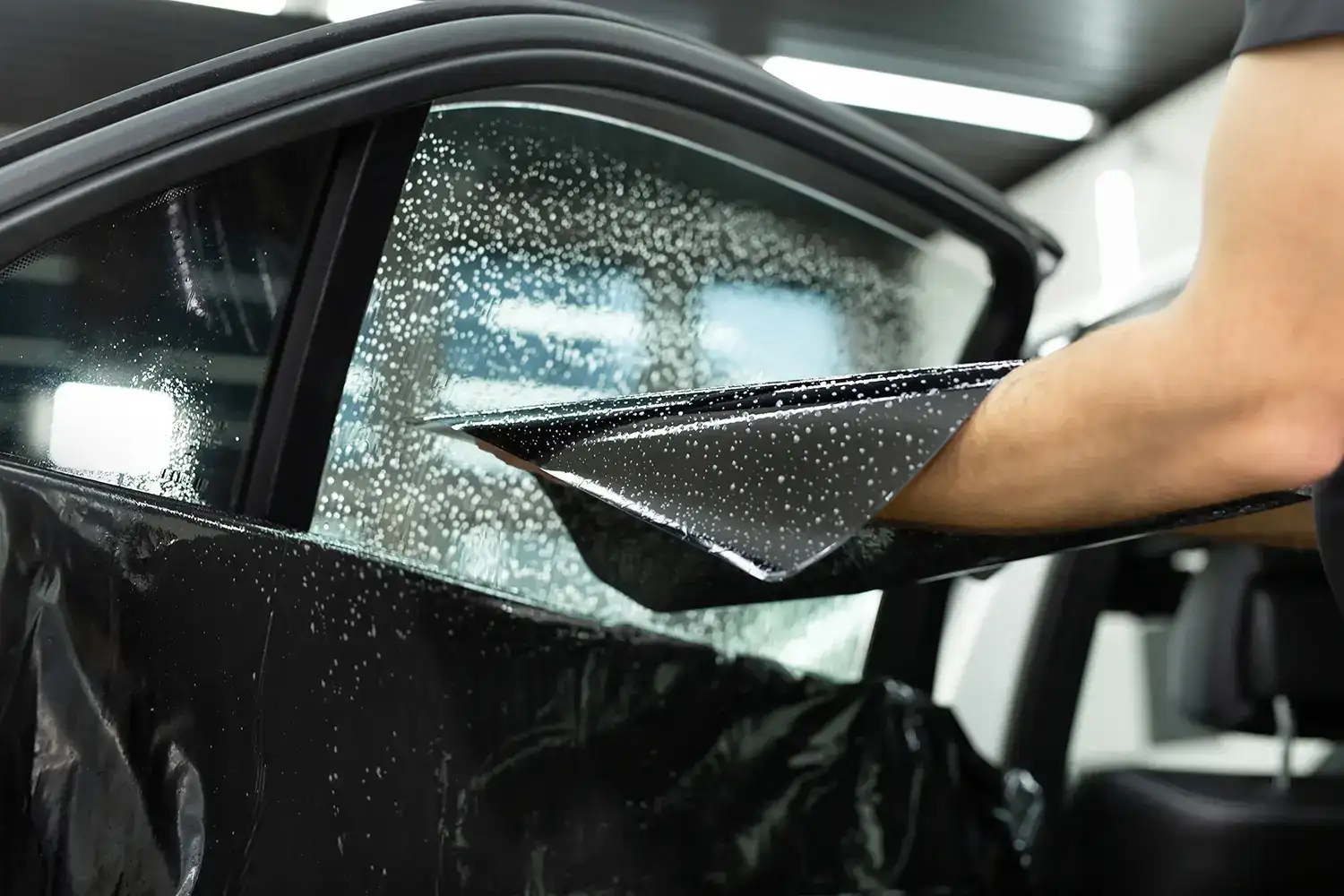Professional vs Do It Yourself Window Tinting: Which Option is Right for You?
Professional vs Do It Yourself Window Tinting: Which Option is Right for You?
Blog Article
The Refine of Expert Home Window Tinting Explained
From choosing the right movie kind to the precise preparation of home windows, each action plays an important duty in accomplishing a perfect application. Complying with these first preparations, the cautious cutting and application of the film demand accuracy to avoid flaws.
Picking the Right Window Film
The preliminary factor to consider is the kind of film, which can range from colored, metalized, to ceramic movies (window tinting). Dyed films mainly supply personal privacy and visual improvement, while metalized movies mirror warmth and UV rays, boosting power efficiency.
Next, consider the film's Visible Light Transmission (VLT) percentage, which identifies just how much light goes into the room. A reduced VLT provides greater privacy and heat rejection however might decrease all-natural light dramatically. Additionally, the film's solar warmth gain coefficient (SHGC) is critical; a reduced SHGC shows better thermal performance, assisting to keep interior convenience.

Preparing the Windows
As soon as the proper window film has actually been picked, the following step is thoroughly preparing the windows for installation. This preparation is crucial for attaining optimum bond and making certain a perfect appearance post-installation.
The first job entails cleaning the home windows thoroughly (window tinting). A top notch glass cleaner is essential, ideally one that is ammonia-free to avoid destructive any type of home window seals or tint products. Making use of a lint-free fabric or paper towels, specialists should get rid of any dust, dirt, or grease, paying unique interest to the sides and corners where particles usually collects

Reducing the Movie
An accurate method to reducing the film is important for ensuring an ideal fit on the ready windows. This step calls for both ability and attention to detail, as errors can bring about unsightly gaps or overlaps that concession the aesthetic and practical qualities of the color.
Prior to reducing, the specialist should measure the home window measurements properly, representing any kind of one-of-a-kind shapes or shapes. It is recommended to make use of top notch home window film, as this product tends to be a lot more flexible during the reducing procedure. The film is generally laid level on a tidy, smooth surface, and a sharp energy knife is employed to make certain tidy edges.
To accomplish optimal outcomes, lots of professionals use layouts created from previous setups or use software to design specific patterns. A common strategy involves including an added margin to the layout, permitting adjustments throughout the application stage.
Furthermore, reducing the movie in a controlled environment decreases the threat of impurities impacting the glue side. By adhering to these meticulous techniques, home window tinting experts can guarantee that the film not only fits seamlessly but also straight from the source carries out effectively with time, improving both appearance and performance.
Applying the Color
After carefully cutting the film to the appropriate measurements, the following step involves using the tint to the home window surface. This process starts with ensuring that the window is clean and devoid of any kind of dirt, debris, or deposits that could affect bond. A customized cleansing solution is typically made use of, followed by comprehensive drying out with a lint-free fabric.
Once the surface area is prepared, the installer will carefully position the tint movie against the glass. It is imperative to straighten the film accurately to prevent misplacement, as any type of mistakes can lead to Our site an unprofessional look. To facilitate this, the installer might use a light haze of application service on the sticky side of the film, allowing for small repositioning if necessary.
Using a squeegee, the installer will certainly after that begin to push the movie onto the glass, functioning from the facility in an outward direction to eliminate air bubbles and guarantee a company bond. This technique is crucial, as it ensures a smooth and perfect coating. Throughout the application, attention to information is important to avoid creases or flaws, ensuring that the tint not only boosts appearances yet also provides the desired performance.
Final Inspection and Treatment
The last examination is an essential action in the home window tinting procedure, guaranteeing that the installment fulfills both aesthetic and practical criteria. Throughout this stage, professionals diligently check out the set up tint for any flaws, such as bubbles, folds, or imbalances. A detailed evaluation likewise consists of checking the adherence of the movie to the glass, in addition to its harmony and general appearance.
After the evaluation, proper treatment and maintenance directions are provided to the customer. It is important to inform them about the suggested timeline for cleaning the tinted home windows, commonly encouraging a wait of a minimum of 30 days after installment to allow the glue to cure completely. Clients need to be educated on appropriate cleansing products and methods, emphasizing the evasion of ammonia-based cleaners that can harm the tint.
Furthermore, specialists must encourage clients on the importance of regular upkeep to lengthen the life of the tint. This consists of routine checks for indications of wear or damage and reacting promptly to any concerns. By guaranteeing a thorough last inspection and providing clear treatment guidelines, window tinting experts improve customer Recommended Reading complete satisfaction and the long life of their work.
Verdict
The specialist window tinting process incorporates several important steps that make certain top quality results. Choosing the appropriate film kind, preparing the home windows carefully, precisely reducing the film, and applying it with accuracy are important for accomplishing a flawless surface.
Report this page